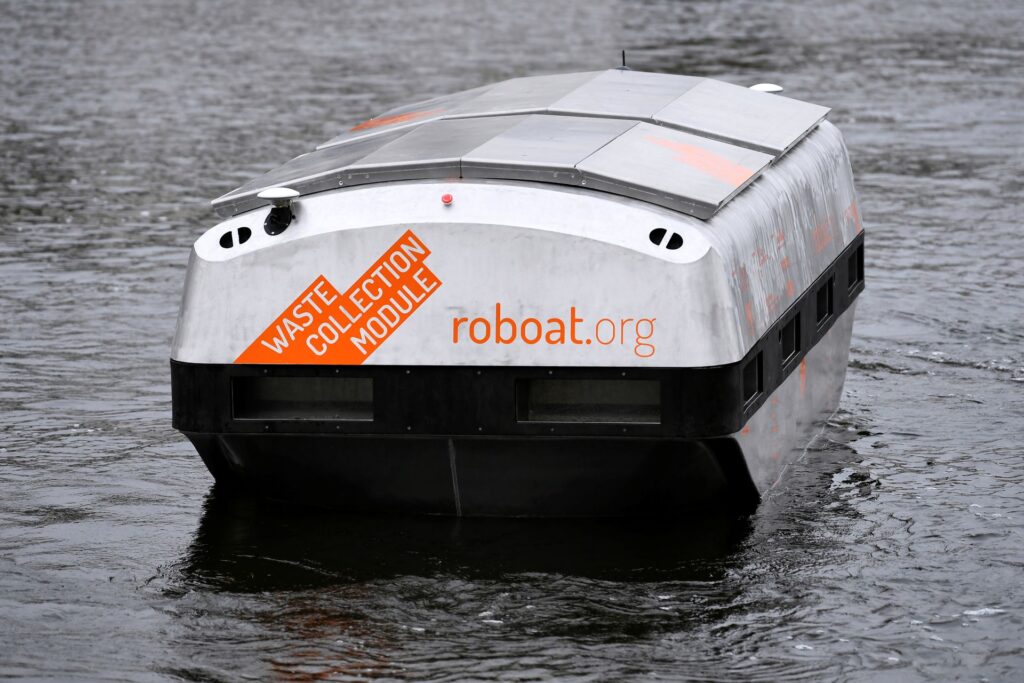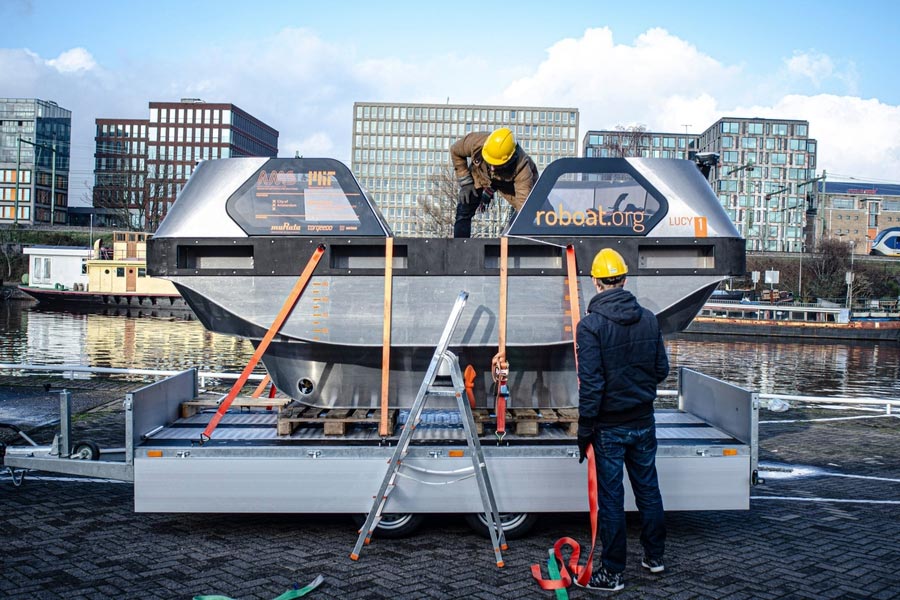MIT-Developed Self-Driving Roboats See Action in the Canals of Amsterdam
Almost everyone knows that Amsterdam has an extensive canal network. The network has multiple purposes, such as transporting people and delivering goods. But like any waterway system, it can become silted and polluted.
An autonomous robotic boat
A team of scientists from the Senseable City Laboratory and the Computer Science and Artificial Intelligence Laboratory (CSAIL) of MIT, in partnership with the Netherlands’ Amsterdam Institute for Advanced Metropolitan Solutions (AMS Institute), have finally completed their project—a full-scale and fully autonomous robotic boat called Roboat. The robotic boat is now undergoing testing at Amsterdam’s waterways.
Several years in the making
The team started creating their smaller prototype in 2015, using the pool at MIT as their testing ground. In 2020, the team released a half-scale version of the robotic boat. It was two meters long, and they tested its navigational capabilities.
This year, the team built two full-scale Roboats. Their watercraft can carry a maximum of five people. It can deliver goods and collect waste. Furthermore, it can be turned into an on-demand infrastructure depending on the need.
The robotic boat, with its black and gray body, looks futuristic. It has two seats that face each other. The fully electrical watercraft carries a battery that is the same size as a small chest, giving the boat power that lasts for ten hours. You can charge the battery wirelessly.
Roboat’s creators now have a boat with robustness and higher precision in control systems, navigation, and perception. New functions include improved dynamic position for better navigation and close-proximity approach mode to enhance its latching capabilities. In addition, the control system of the robotic boat adapts to the number of people riding the boat.
Its robust navigation software uses GPS, enabling the boat to autonomously decide on the safest route from point A to point B. Its system likewise scans the environment continuously to avoid collisions with static and moving objects, such as other boats, pillars, and bridges.
Roboat uses lidar and several cameras, enabling the boat to have a 360-degree view of its surroundings. Currently, the system is still learning, and its algorithm can flag objects it does not recognize as unknown. Later, the team reviewing the collected data will manually select the unknown object and give it the appropriate tag.
Roboat’s control algorithms are similar to the system used on autonomous cars. For example, it can translate a given path into instructions to provide its thrusters or propellers to make the boat move in the right direction.

Impressive latching mechanism
One of the most outstanding features of Roboat is its latching mechanism. The small cameras on the boat guide it to the other boats or the docking station when the cameras detect particular QR codes. This latching mechanism lets the boat connect to other boats or the docking station to act as a temporary bridge or floating squares and stages. Thus, the boat helps ease traffic and can be used as a floating platform for small events and activities.
Roboat’s hull design is universal. However, its top decks can be switched out according to the current requirements for the boat.
The robotic boat can do its tasks 24/7 without a skipper. However, there will be an onshore operator who will monitor the boat remotely. From the control center, an operator can efficiently monitor more than 50 Roboats.
During the testing period, the Roboats will be used to collect trash from the canals. However, the scientists are still waiting for permission from the government to allow the Roboats to enter Amsterdam’s regular water traffic system.
